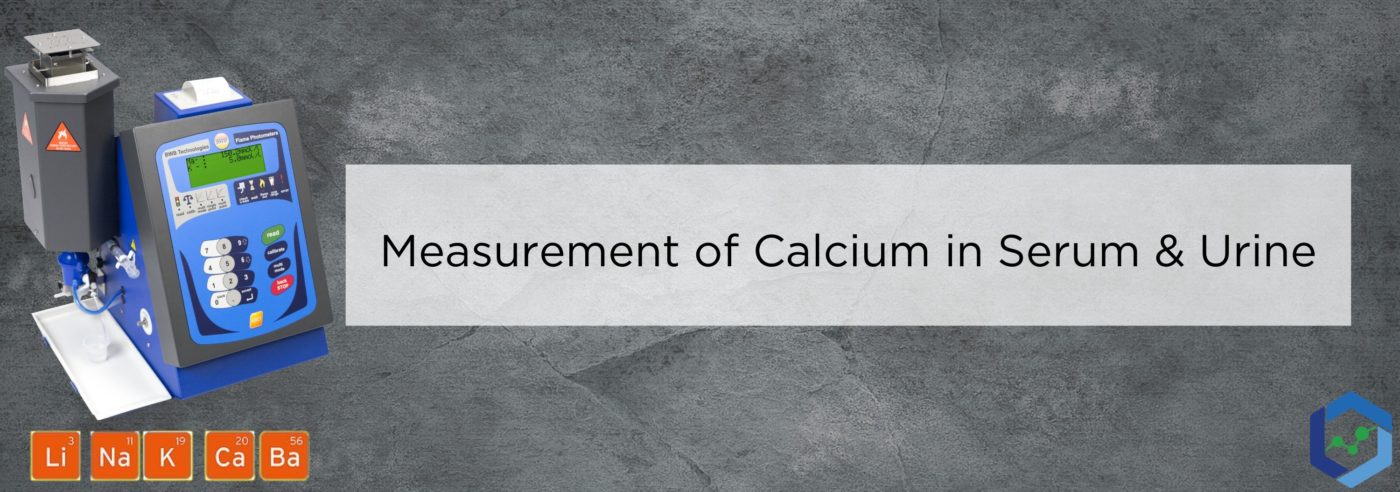No products in the cart.
Science News, Flame Photometry
Measurement of Calcium in Serum & Urine
Measurement of Calcium in Serum & Urine
This method reduces or removes potential interference from sodium, potassium and phosphates normally present in serum and urine by diluting the samples with a diluent containing ethylenediaminetetraacetic acid (EDTA).
There was no effect from the presence of dissolved proteins on the calcium signal; the protein remains in solution when the serum is diluted with ≤0.15M EDTA. Prepared diluted samples contained 0.1-0.3mEq/l
of calcium in urine and 1-3mM/l in serum, with an accuracy of ± 0.1mEq/l.
Reagents
EDTA Stock solution: a 0.2M solution of the ammonium salt of EDTA at pH 8.0 is prepared by placing 58.4 g of EDTA in a 400ml beaker and adding 100ml’s of deionised distilled water. Sufficient concentrated NH4OH is added to dissolve the powder and raise pH to 8.
The solution is filtered into a 1 litre volumetric flask and diluted to volume with deionised distilled water.
Standard stock solutions were prepared. These being, 1.0 M sodium chloride and potassium chloride and 0.2 M calcium chloride and magnesium chloride were prepared from carefully dried NaCl, KCl, CaCO3 and MgCl.
A standard 1.0 M phosphate solution was prepared from NaH2PO4∙H2O.
Background Correction Solutions
Different background correction solutions were prepared for serum and urine dilutions from stock solutions containing all of the above cations except calcium (i.e. sodium, potassium, magnesium and phosphate), in the concentrations shown.
Procedure
Solutions, standards and samples were diluted 50-fold before aspiration into the flame. Serum or urine was diluted 50-fold using 0.15M EDTA, prepared from the EDTA Stock Solution.
To carry out a 50-fold dilution, 2ml of serum or urine is added to a 100ml volumetric flask (glass should not be used if Na is to be measured) and made up to the mark.
The Background Correction Solution is used to zero the instrument, as it contains all of the light-emitting species expected to be present in the sample (except the one to be measured). Zeroing the instrument requires running the Background Correction Solution as a blank prior to calibration of the flame photometer.
The flame photometer was then calibrated using 0.2 M calcium chloride solution prior to analysis of samples.
Background Correction Solutions
Set the flame photometer in accordance to MultiPoint/Single Ion Calibration found on page 24 of the BWB Technologies Installation and Operation Manual, to measure potassium emission. Nebulise the lithium working standard solutions and adjust the controls until steady zero and maximum readings are obtained. Nebulise the intermediate working standard solutions and construct a graph relating raw emission data (known as RAW in BWB the flame photometer) to concentration of all the standard solutions.



